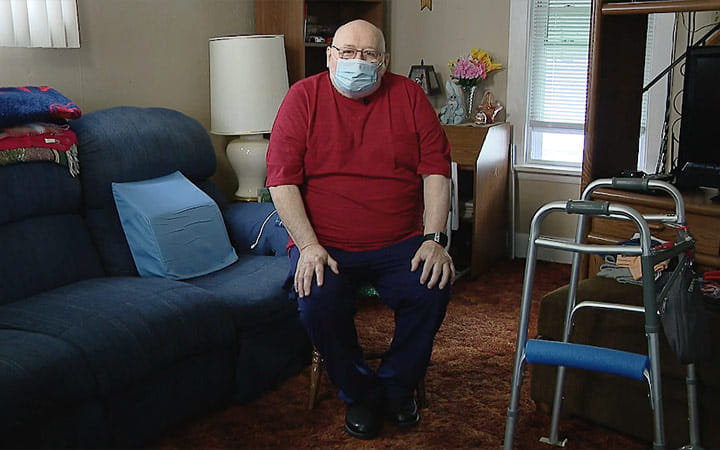Doctors Save Leg of Patient With Diabetes By Restoring Blood Flow
May 28, 2021

When a patient’s doctor suggests amputation, the lucky ones find Mehdi Shishehbor, DO, MPH, PhD, for a second opinion.
Dr. Shishehbor is an interventional cardiologist at University Hospitals Harrington Heart & Vascular Institute, and is with UH’s Limb Salvage Program, which specializes in minimally invasive approaches that restore blood flow and prevent amputation.
In June of 2019, John Potocnik, 72, of Mayfield Heights, collapsed in his bedroom. Another fall soon after sent John to the hospital, where tests revealed extreme blood sugar levels. He was moments away from a diabetic coma. His left foot was cold and lifeless with a wound that wouldn’t heal. John underwent three failed procedures to restore circulation to his foot. Doctors told him his leg must be amputated. It was a grim outlook, but not completely unexpected. John’s father was diabetic and a double amputee.
Headed for amputation just like his father, John sought a second opinion. His podiatrist recommended Dr. Shishehbor, who immediately gave him hope. In November 2019, Dr. Shishehbor and his team successfully restored blood flow to John’s foot with a revascularization procedure. His leg warmed. His wound healed. John can now walk on his foot with no pain.
The Amputee Coalition of America estimates there are 185,000 new lower extremity amputations each year within the United States. That’s more than 500 amputations every day.
Circulation issues like peripheral artery disease (PAD), which cause painful cramping, wounds and numbness are often addressed with amputation. It’s a procedure designed to solve certain issues, but can lead to more problems. The main cause of limb loss is vascular disease and nearly half of all patients with vascular disease die within five years after amputation. This is higher than the five-year mortality rates for breast cancer, colon cancer and prostate cancer. Around 30 percent of amputees experience depression or anxiety. Amputees can have “phantom pain” in the missing limb that causes stabbing, burning or shooting sensations.
UH Harrington Heart & Vascular Institute is proud to serve as a high volume site for procedures related to preventing amputation in patients with advanced vascular disease. Learn more about the Limb Salvage and Amputation Prevention Program.


